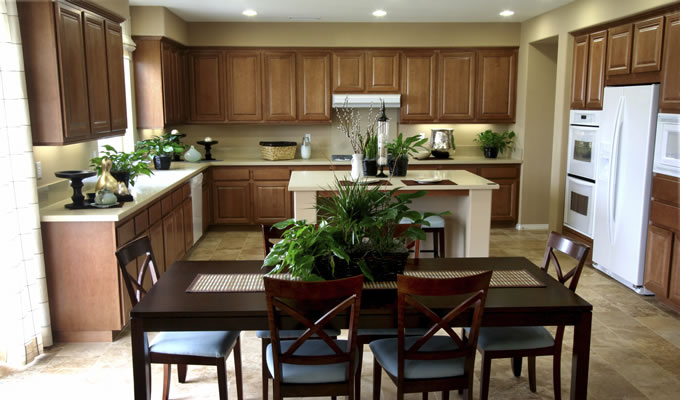
As technology evolves, so do our lighting options. With our suppliers phasing out incandescent and halogen bulbs, and fluorescent tubes soon following suit, we're excited to guide you towards the next generation of illumination: LED.
Lamp Restrictions and Phaseout Plans
DOE Finalizes Two New Rules for General Service Lamps That Will Conserve Energy, Save Consumers Money .
The DOE finalized two new rules for general service lamps (light bulbs):
- Revised definition of general service lamps: This clarifies which types of bulbs fall under the regulations, ensuring more efficient products are covered.
- Minimum efficacy standard of 45 lumens per watt: This mandates that bulbs meeting the revised definition must produce at least 45 lumens of light for every watt of energy used, significantly raising the bar for energy efficiency.
These rules aim to achieve the following:
- Saving consumers money: Projected annual savings of $3 billion on utility bills.
- Reducing carbon emissions: Over 30 years, 222 million metric tons of emissions will be cut, equivalent to the annual emissions of 28 million homes.
- Promoting efficient lighting: The revised definition ensures more efficient bulbs are included, and the higher efficacy standard pushes for further advancements.


Embrace the LED Advantage:
- Warmth meets Efficiency: Ditch the harsh blue of some LED bulbs. Choose options with a color temperature of 2700 to 3000 Kelvin, mimicking the comforting glow of traditional incandescent bulbs while offering unparalleled energy savings.
- Bid farewell to ballasts: Replace existing linear or U-bend fluorescent tubes with direct-wire LED tubes. They fit seamlessly in the same fixture, eliminate the need for ballast replacements, and shine brighter for longer.
- Future-proof your lighting: Consider "integrated LED" fixtures. These eliminate the need for bulb replacements, lasting up to a decade! Invest in quality, branded fixtures from reputable retailers to ensure maximum longevity and performance.
Where to Use LED Lights
The range of LED products for both home and industrial use is expanding each year. Advances in LED technology have led to a broader product range, more efficient production, and reduced costs.
Commercial and Industrial Lighting
Due to their high efficiency and directional nature, LEDs are perfect for many industrial applications. They are becoming more prevalent in street lighting, parking garage illumination, outdoor area lighting, refrigerated case lighting, modular lighting, and task lighting.
Under-Cabinet Lighting

LEDs are excellent for illuminating confined spaces such as under cabinets for kitchen tasks and reading recipes, thanks to their small size and directionality. It's important to evaluate different products for the best light quality and directionality for your space.
Recessed Downlights
Used widely in residential kitchens, hallways, bathrooms, and various commercial settings, recessed downlights are a common application of LED technology. The DOE estimates over 600 million such lights are installed across U.S. homes and businesses.

LED Replacement Bulbs

With ongoing improvements and decreasing costs, LED bulbs are increasingly replacing standard 40, 60, 75, and 100 Watt incandescent bulbs. Consumers should check the Lighting Facts Label for brightness and color suitability for the intended space.
LED Holiday Lights
LEDs use considerably less electricity than traditional incandescent bulbs. This is evident in LED holiday lights, like Christmas tree lights, which offer several benefits:
Safety: LEDs emit less heat than incandescent lights, reducing fire hazards and the risk of burns.
Durability: Constructed with epoxy lenses instead of glass, LEDs are more resistant to breakage.

Longevity: An LED light string could last up to 40 holiday seasons.
Installation Ease: Up to 25 strings of LED lights can be connected end-to-end without overburdening a wall socket.
FAQs: Transitioning to LED Lighting
Q: Are LED bulbs truly brighter than incandescent bulbs?
A: Not necessarily. Brightness is measured in lumens, not watts. While an LED bulb may use fewer watts than an incandescent bulb, it can still produce the same or even more lumens, making it appear brighter.
Q: What do I do if my light fixture only takes incandescent bulbs?
A: Many incandescent bulb replacements now exist in LED form with the same Edison screw-in base. Choose an LED bulb with a similar wattage or lumen output to achieve the desired brightness.
Q: How do I choose the right color temperature for LED bulbs?
A: Color temperature is measured in Kelvins (K). Opt for 2700-3000K for a warm, incandescent-like light, or 4000K and above for a cooler, white light. Consider your application and preferences when choosing.
Q: Can I replace fluorescent tubes with LEDs directly?
A: It depends. For some fixtures, you can find direct-wire LED tubes that fit in the same space and eliminate ballasts. For others, you may need to replace the entire fixture with an integrated LED option.
Q: Are integrated LED fixtures worth the investment?
A: While they lack replaceable bulbs, integrated LEDs typically last much longer than traditional fixtures and bulbs combined. If you're looking for a long-term solution, they can be a cost-effective choice.
We hope these FAQs help answer your questions about transitioning to LED lighting. Remember, our friendly team is always available to assist you in finding the perfect lighting solution for your needs.
